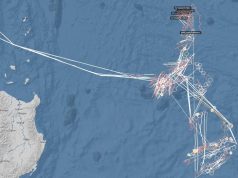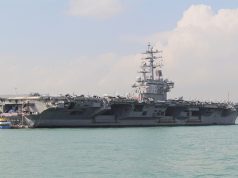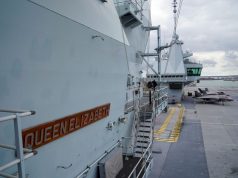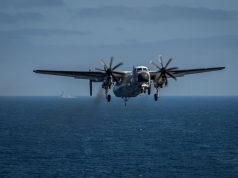
(UPDATE – 8:44 p.m.) TOKYO – A U.S. Navy transport plane carrying 11 people crashed in the Philippine Sea south of Japan on Wednesday as it flew to the aircraft carrier the Ronald Reagan, the U.S. Seventh Fleet said.
Eight people had been rescued, with the remaining three unaccounted for, it said, adding that all of the rescued personnel were transferred to the Ronald Reagan for medical evaluation and were in good condition.
“Search and rescue efforts for three personnel continue with U.S. Navy and Japan Maritime Self-Defense Force (JMSDF) ships and aircraft on scene,” the U.S. Seventh Fleet said in a news release.
“The incident will be investigated.”
At approximately 2:45 p.m. Japan Standard Time, Nov. 22, 2017, the C2-A aircraft with 11 crew and passengers onboard crashed into the ocean approximately 500 nautical miles southeast of Okinawa.
The aircraft was conducting a routine transport flight carrying passengers and cargo from Marine Corps Air Station Iwakuni to USS Ronald Reagan (CVN 76). The Reagan is operating in the Philippine Sea as part of an exercise with JMSDF.
The C2-A is assigned to the “Providers” of Fleet Logistics Support Squadron Three Zero, Detachment Five, forward deployed in NAF Atsugi, Japan. Detachment Five’s mission includes the transport of high-priority cargo, mail, duty passengers and Distinguished Visitors between USS Ronald Reagan (CVN 76) and shore bases throughout the Western Pacific and Southeast Asia theaters.
Japanese Minister of Defense Itsunori Onodera told reporters the U.S. Navy had informed him that the crash in the Philippine Sea may have been the result of engine trouble.
C-2 aircraft have been in operation for more than five decades and are due to be replaced by the long-range tilt-rotor Osprey aircraft.









